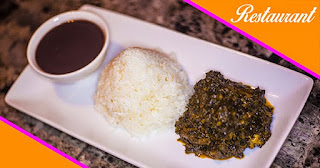In the bustling streets and homes of Haiti, one can find a beloved snack that embodies the island's flavors and traditions: Accra. These crispy, flavorful fritters are a staple of Haitian cuisine, enjoyed by locals and sought after by visitors eager to taste a true culinary gem. Accra traces its roots to Africa, specifically the Akan people of Ghana, where a similar dish called "akara" is widely enjoyed. This deep-fried delight made its way to Haiti through the transatlantic slave trade, where it evolved with local ingredients and cooking methods. The basic ingredients for Accra are simple yet essential: black-eyed peas (also known as "pois pigeon" in Haiti), flour, and various seasonings. The peas are soaked overnight, then blended into a thick batter with flour, garlic, scallions, and spices like thyme and Scotch bonnet pepper. The mixture is shaped into small patties or balls and deep-fried until golden brown and crispy.
While the classic Accra is made with black-eyed peas, variations abound based on regional preferences and ingredient availability. Some recipes incorporate other types of beans or even salted codfish ("morue" in Haitian Creole) for added flavor and texture. Accra is often served as a popular street food, sold by vendors in markets and along busy streets. It can be enjoyed on its own as a quick snack or paired with pikliz, a spicy slaw made from pickled vegetables, which adds a zesty contrast to the savory fritters. Pikliz typically includes shredded cabbage, carrots, bell peppers, vinegar, Scotch bonnet peppers, and a blend of spices, enhancing the overall taste experience.Beyond its culinary appeal, Accra holds cultural significance in Haiti. It is a symbol of resilience and adaptation, reflecting the fusion of African heritage with Caribbean ingredients and flavors. Sharing Accra with friends and family during social gatherings or celebrations is a cherished tradition, reinforcing the communal spirit that defines Haitian hospitality. As Haitian communities have spread across the globe, so too has the love for Accra. In cities like Miami, New York City, and Montreal, Haitian restaurants and food trucks serve Accra alongside other traditional dishes, introducing its distinctive flavors to new audiences and preserving its cultural heritage.Like many aspects of Haitian cuisine, Accra faces challenges such as economic constraints and access to quality ingredients. However, initiatives promoting culinary tourism and cultural exchange provide opportunities to showcase Accra's unique flavors and significance on a global stage.
Haitian Accra is more than just a snack; it is a testament to Haiti's culinary creativity, cultural resilience, and vibrant flavors. Whether enjoyed on the bustling streets of Port-au-Prince or in a bustling city abroad, Accra offers a taste of history and tradition that continues to captivate taste buds and hearts alike. Its journey from West Africa to the Caribbean underscores the enduring connections between food, culture, and community, making Accra a cherished part of Haiti's rich gastronomic tapestry.














